Lexical graphs
Graph RAG with LangChain and Neo4j

Adam Cowley
Manager, Developer Education at Neo4j
Recap
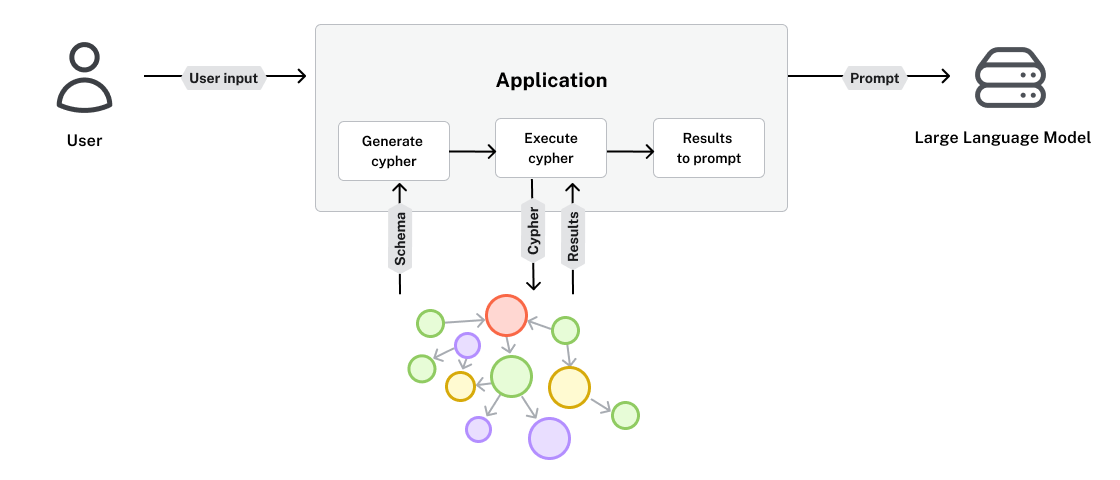
Lexical graphs
- A graph representation of unstructured text and documents
- Stores a hierarchical representation of a book, research paper, etc
- Granular level stores raw text
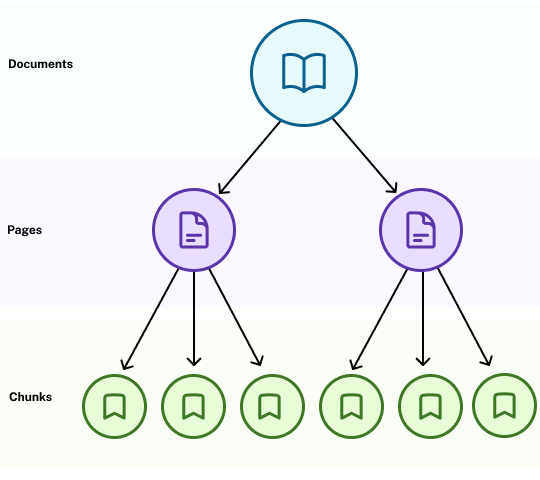
Romeo and Juliet
Introduction:
The Project Gutenberg eBook of Romeo and Juliet
This ebook is for the use of anyone anywhere in the United States and
most other parts of the world at no cost and with almost no restrictions
Title: Romeo and Juliet
Author: William Shakespeare
Character Information:
Dramatis Personæ
ESCALUS, Prince of Verona.
MERCUTIO, kinsman to the Prince, and friend to Romeo.
PARIS, a young Nobleman, kinsman to the Prince.
Page to Paris.
...
Prologue:
Enter Chorus.
CHORUS.
Two households, both alike in dignity,
In fair Verona, where we lay our scene,
From ancient grudge break to new mutiny,
...
Act and Scenes:
ACT I
SCENE I. A public place.
Enter Sampson and Gregory armed with swords and bucklers.
SAMPSON.
Gregory, on my word, we’ll not carry coals.
GREGORY.
No, for then we should be colliers...
1 https://gutenberg.org/ebooks/1513
Romeo and Juliet as a knowledge graph
- Play consists of Acts
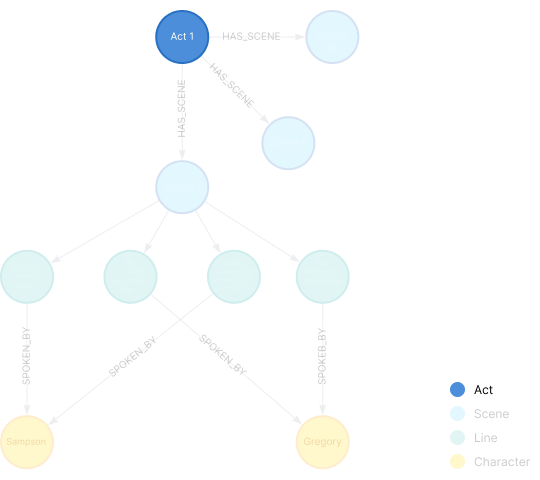
Romeo and Juliet as a knowledge graph
- Play consists of Acts
- Acts consist of Scenes
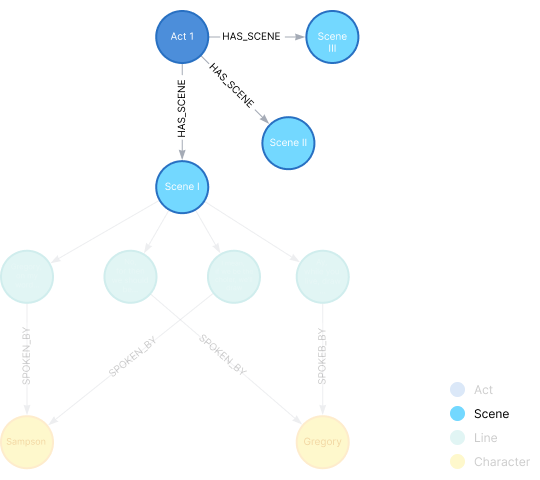
Romeo and Juliet as a knowledge graph
- Play consists of Acts
- Acts consist of Scenes
- Scenes have Lines
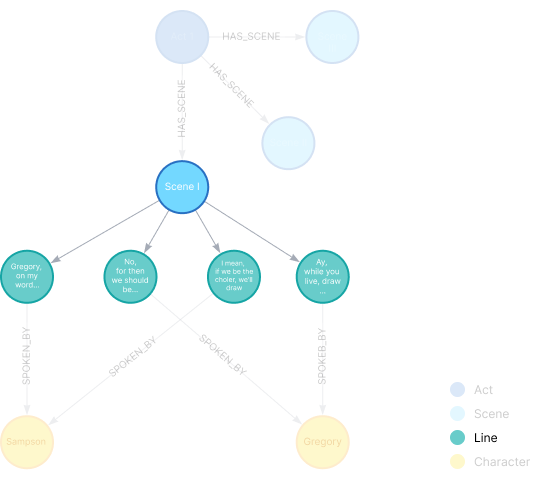
Romeo and Juliet as a knowledge graph
- Play consists of Acts
- Acts consist of Scenes
- Scenes have Lines
- Lines are spoken by Characters
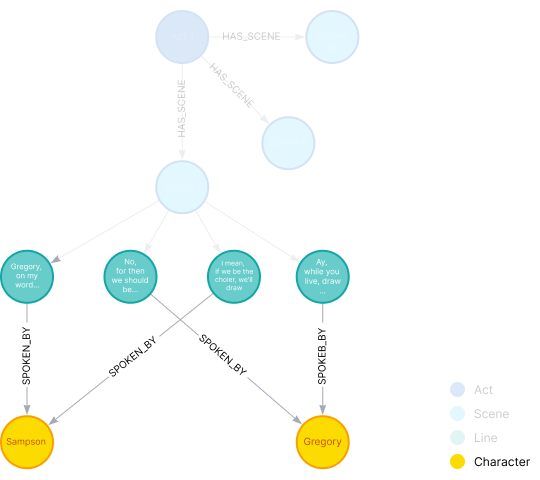
Romeo and Juliet as a knowledge graph
- Play consists of Acts
- Acts consist of Scenes
- Scenes have Lines
- Lines are spoken by Characters
→ Each Line node will have a text and embedding properties
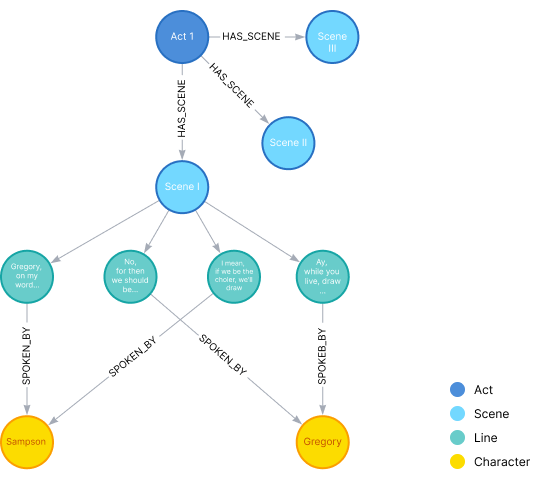
Loading the document
Load a document into memory using a document loader:
# Load the PDF
loader = PyPDFLoader("romeo-and-juliet.pdf")
pages = loader.load()
Splitting the document
act_splitter = RecursiveCharacterTextSplitter( # Split text into acts separators=[ r"\n\nTHE PROLOGUE.", r"\n\nACT", r"\n\n\*\*\* END"], is_separator_regex=True )scene_splitter = RecursiveCharacterTextSplitter( # Split act into scenes separators=[r"\nSCENE "], is_separator_regex=True )
Creating nodes and relationships
play = Node(type="Play",id="romeo-and-juliet",properties={ "title": "Romeo and Juliet", "playwright": "William Shakespeare", "genres": ["Romance", "Tragedy"] })# Store in a graph document graph_doc = GraphDocument(nodes=[play], relationships=[])
Extracting acts
parts = act_splitter.split_text(text)for act in parts: print(act[:20])
THE PROLOGUE...ACT IACT IIACT III
Extracting acts
parts = act_splitter.split_text(text) for a, act in enumerate(parts):first_line = act_text.split("\n")[0].strip()if first_line.startswith("ACT"):act_node = Node(type="Act",id=first_line,)graph_doc.nodes.append(act_node)
Extracting acts
for a, act in enumerate(parts): # ... # act_node = Node(...)# Create a relationship relationship = Relationship(source=play,target=act_node,type="HAS_ACT",properties=dict(order=a))graph_doc.relationships.append(relationship)
Saving nodes and relationships
Using the Neo4jGraph object:
graph = Neo4jGraph(
url=NEO4J_URI,
username=NEO4J_USERNAME,
password=NEO4J_PASSWORD
)
graph.add_graph_documents([graph_doc])
Let's practice!
Graph RAG with LangChain and Neo4j

